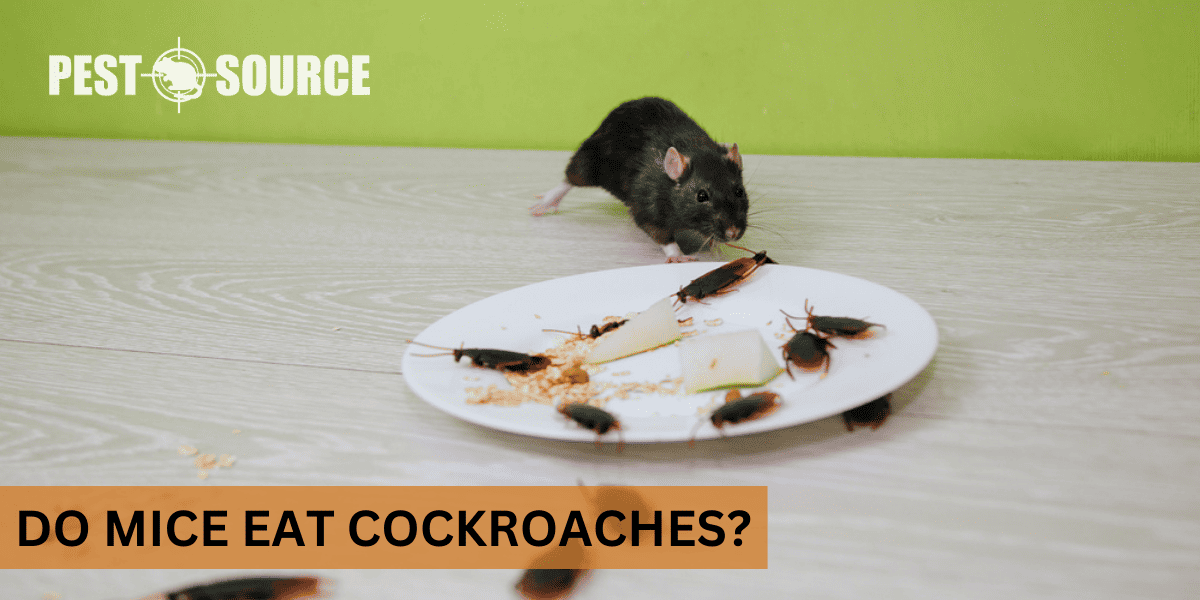Yes, mice do eat cockroaches, as they are opportunistic feeders and consume a variety of foods, including insects. This predatory behavior can play a role in controlling cockroach populations. The article will explore the dynamics of this predator-prey relationship and its implications for pest control strategies.
POINTS
- Mice and rats are opportunistic feeders that consume a wide range of items, including cockroaches, particularly in environments where other food sources may be scarce.
- Both mice and rats can contribute to controlling cockroach populations by preying on them, but relying on rodents for pest control can lead to other issues such as disease transmission and property damage.
- Rodents and cockroaches are attracted to similar conditions like warmth, moisture, and available food, which is why they often coexist in human environments.
- Pest control substances designed to target roaches and rats can be effective but also pose risks to non-target species and must be used with care to avoid unintended harm.
- Common misconceptions about the dietary habits of rodents and the classification of cockroaches can lead to confusion; accurate information is essential for effective pest control, as cockroaches are insects, not rodents, and rodents will eat cockroaches when available.
Do Mice Eat Roaches?
Mice are opportunistic feeders, and their diets can include a wide range of items, from grains and fruits to insects and other small creatures. Scientific evidence suggests that mice, indeed, do consume cockroaches. Studies on the dietary habits of urban mice have found cockroach remnants in their stomach contents, indicating that they will eat cockroaches when available. Anecdotal evidence from homeowners and pest control professionals further supports the claim that mice will prey on cockroaches, especially in environments where other food sources may be limited.
General Dietary Habits of Mice
Mice are not picky eaters and will often take advantage of whatever food sources are present in their environment. Their inclination to eat insects is particularly notable, as these are often abundant and can provide a high-protein snack. Cockroaches, being common in many of the same urban and suburban environments as mice, become a part of the mouse diet. This tendency to eat a variety of foods helps mice to survive in diverse habitats, from fields and forests to city sewers and homes.
Dietary Behaviors and Ecological Interactions of Mice, Rats, and Cockroaches
When comparing the eating habits of mice and rats, it’s clear that both species have similar diets. Rats, like mice, are omnivores and will consume a variety of foods, including cockroaches. The primary difference is that rats are larger and can take on bigger prey or scavenge larger quantities of food.
Ecological Roles and Interactions
In shared environments, mice, rats, and cockroaches can have complex interactions. These species often compete for the same food sources, which can affect their respective populations. For example, if a mouse population decreases due to a lack of food, cockroach populations may increase due to reduced predation. Conversely, an increase in rodent populations might suppress cockroach numbers.
Mice and rats can also play a mutualistic role in their ecosystems by controlling insect populations, including cockroaches. However, this relationship can quickly turn antagonistic if the rodents become overpopulated and start causing damage to human properties or spreading diseases.
Pest Control Dynamics and Attraction Factors Among Mice, Rats, and Cockroaches
Rodents as Natural Pest Controllers
In the dynamics of urban pest control, mice and rats may contribute to managing roach populations. By preying on cockroaches, these rodents can naturally limit the number of these insects in certain environments. However, this is not a foolproof method of pest control. Relying on rodents to control cockroach populations can lead to other issues, as rodents themselves are pests and carry diseases.
Effectiveness and Consequences
The use of rodents for natural pest control against cockroaches is a double-edged sword. While they can reduce the number of roaches, the health risks and property damage associated with rodent infestations negate any benefits. Moreover, rodents reproduce quickly, and their populations can spiral out of control, leading to a greater pest problem than the one they were supposed to mitigate.
Attraction and Repulsion Factors
The presence of cockroaches can attract rodents, as they provide a food source. Conversely, areas with high rodent populations might deter cockroaches due to the threat of predation. However, both pests are attracted to similar conditions, such as warmth, moisture, and availability of food, which is why they often coexist in human dwellings.
Impact of Pest Control Substances
Common pest control substances, such as roach and rat poisons, have a significant impact on these species. These substances are designed to be attractive and lethal to pests, but they can also pose risks to non-target species, pets, and even humans if not used properly. It’s important to use these substances judiciously and follow the manufacturer’s instructions closely to minimize unintended consequences.
Myths, Misconceptions, and Clarifications
Common Misconceptions
There are several myths surrounding the feeding habits of mice and rats, particularly the idea that they may not eat cockroaches. As established, both mice and rats will indeed prey on cockroaches when given the opportunity. Another misconception is that cockroaches are rodents, which is not true. Cockroaches are insects, and their biological classification is entirely separate from that of rodents.
Clarifying Confusions
The belief that cockroaches could be considered rodents likely stems from their cohabitation in human homes and their status as pests. However, understanding the distinct differences between these creatures is crucial for effective pest control strategies. Rodents are mammals with continuously growing incisors, while cockroaches are insects with a chitinous exoskeleton and six legs.
Accurate Information on Feeding Behavior and Ecological Roles
It’s important to provide accurate information on the feeding behavior and ecological roles of these animals to debunk prevalent myths. Mice and rats are opportunistic feeders and important ecological players in controlling insect populations, including cockroaches. However, their role as pests themselves cannot be overlooked, and professional pest control measures are often necessary to manage these species effectively.



